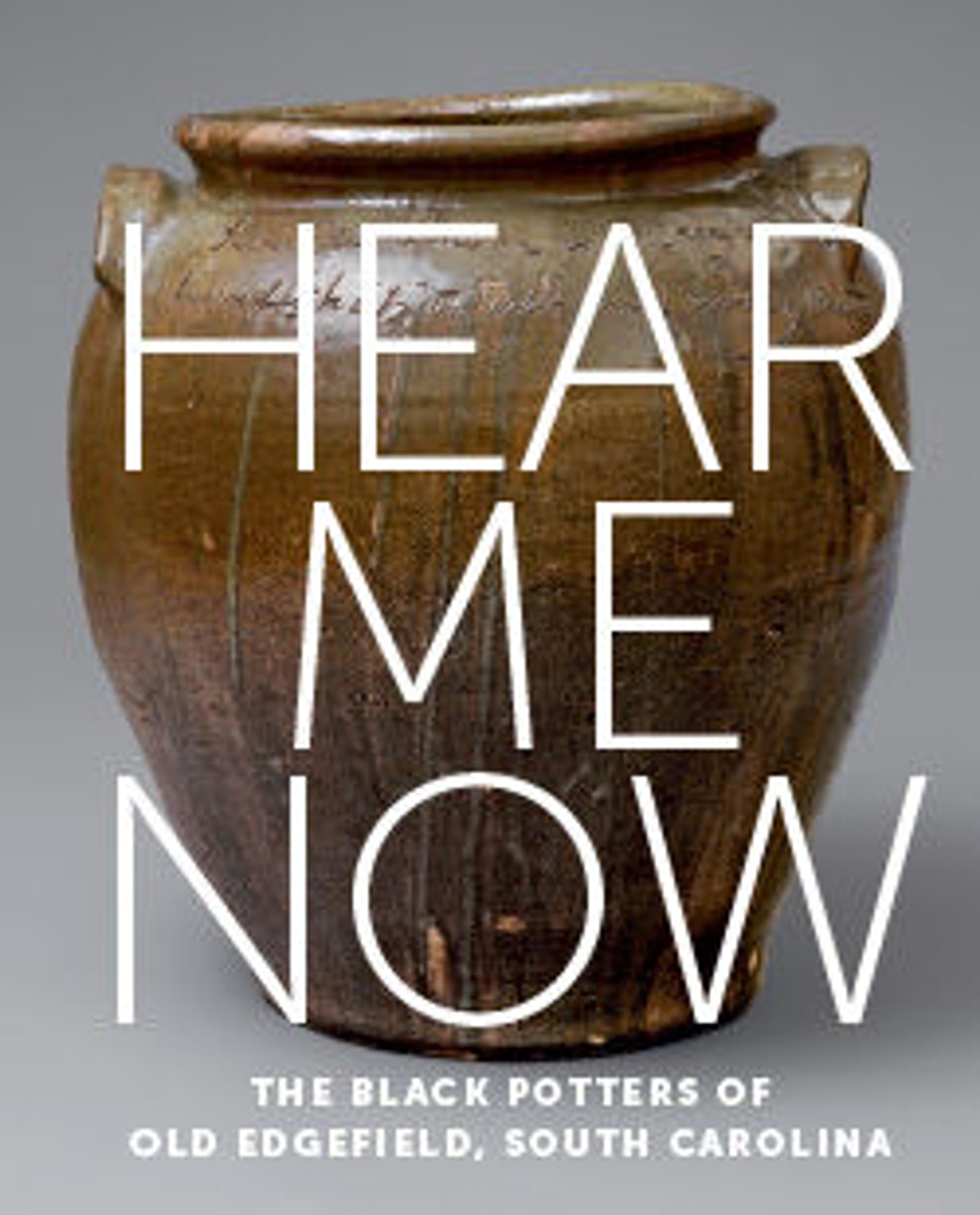Face jug
This rare face vessel, one of only a handful by this skilled, unidentified potter, is one of the most recognizable and iconic examples of this enigmatic form. Technically and aesthetically, it is distinct among the large group of 19th-century Edgefield-made face jugs. Harvest jugs—so called for the horizontal handle atop the vessel—are uncommon, and at over ten inches in height, this one is quite large. Notably, the hand-modeled features are quite different than those on the majority of known face vessels, which are typically depicted with exaggerated features in a grotesque or menacing manner. The applied elements on this example are delicately modeled in high relief, with particular attention to the facial anatomy, proportions, and symmetry. The features are sensitively rendered with acute detail, such as the eyebrows with incised lines for hair and the delicate lips revealing small, kaolin teeth. The beautiful mottled-green alkaline glaze flecked with areas of iron spotting is in contrast to the dark brown alkaline glazes on most face vessels. This rare jug is also significant for its likeness to the face vessel in J. A. Palmer’s 1882 stereopticon photograph "The Aesthetic Darkey," a satirical image inspired by a famous period cartoon of Oscar Wilde depicted as a monkey admiring a lily and sunflower. From Palmer’s "Aiken and Vicinity" series, this challenging image is the earliest visual document of an Edgefield face vessel.
Artwork Details
- Title:Face jug
- Maker:Unrecorded Edgefield District potter (American)
- Manufacturer:Unknown Old Edgefield District Pottery
- Date:ca. 1850–80
- Geography:Made in Edgefield County, South Carolina, United States
- Culture:American
- Medium:Alkaline-glazed stoneware with kaolin
- Dimensions:10 1/4 in. (26 cm)
- Credit Line:Purchase, Nancy Dunn Revocable Trust Gift, 2017
- Object Number:2017.310
- Curatorial Department: The American Wing
More Artwork
Research Resources
The Met provides unparalleled resources for research and welcomes an international community of students and scholars. The Met's Open Access API is where creators and researchers can connect to the The Met collection. Open Access data and public domain images are available for unrestricted commercial and noncommercial use without permission or fee.
To request images under copyright and other restrictions, please use this Image Request form.
Feedback
We continue to research and examine historical and cultural context for objects in The Met collection. If you have comments or questions about this object record, please contact us using the form below. The Museum looks forward to receiving your comments.
